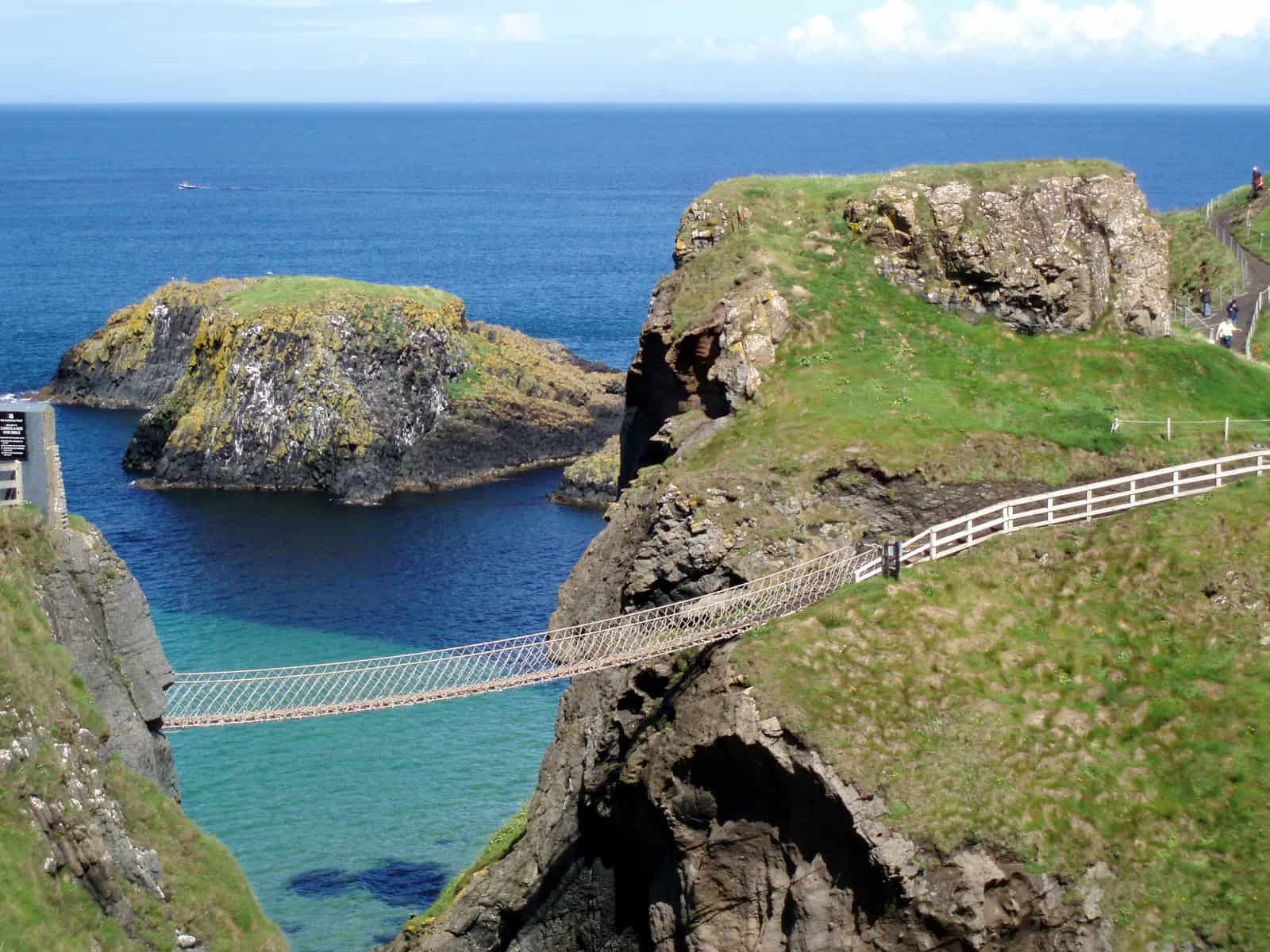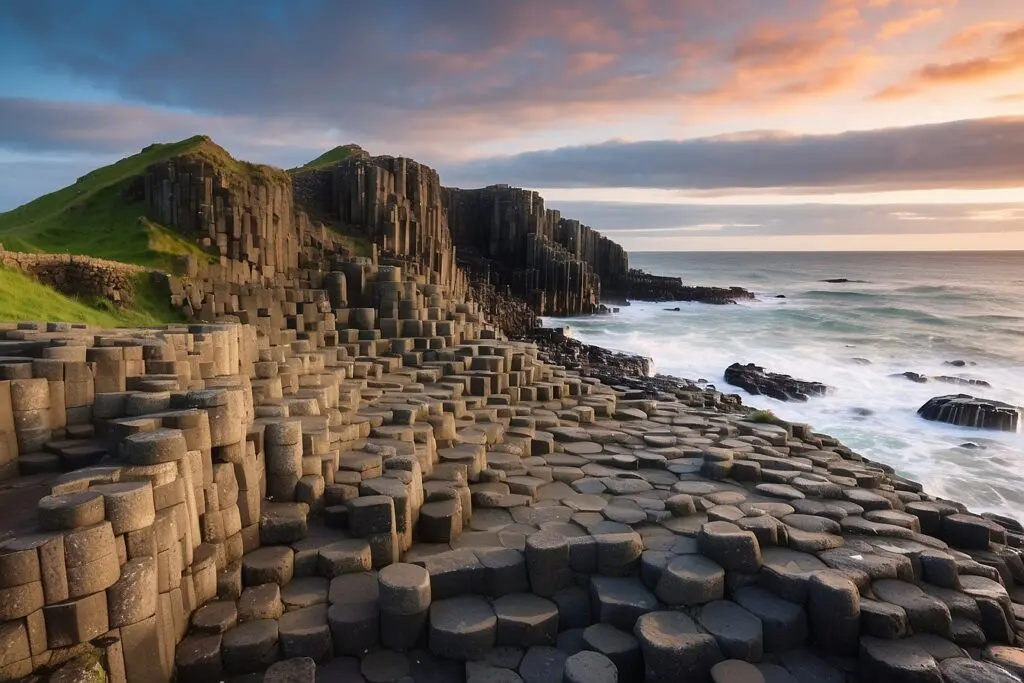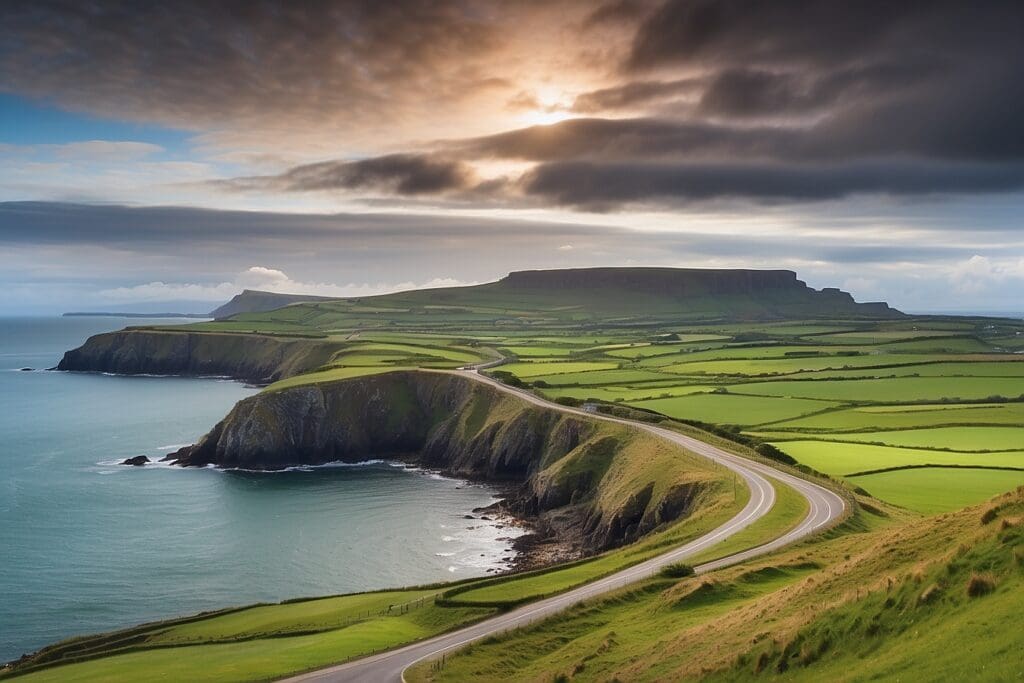Causeway Coastal Route-Ballymacran Bank-Ballykelly/Limavady-MYROE

Updated On: March 05, 2024 by Ciaran Connolly
Stretching along the rugged coastline of Northern Ireland, the Causeway Coastal Route is a breathtaking journey that showcases the region’s natural beauty and rich history. From dramatic cliffs to quaint villages, every twist and turn of this route offers a new adventure waiting to be discovered. In this article, we’ll look closely at a section of this iconic route, from Ballymacran Bank to Ballykelly/Limavady, exploring the highlights and hidden gems.
Table of Contents
Ballymacran Bank: A Natural Wonder
Our journey begins at Ballymacran Bank, a stunning stretch of coastline just a short drive from the bustling town of Ballycastle. This area is renowned for its sandy beaches, rocky cliffs, and panoramic views of the Atlantic Ocean. One of the highlights of Ballymacran Bank is its unique rock formations, which have been sculpted by the relentless force of the waves over thousands of years. Visitors can spend hours exploring the tidal pools and sea caves that dot the shoreline or simply relax and soak up the beauty of this unspoiled natural landscape.
Exploring Ballykelly and Limavady
Continuing along the Causeway Coastal Route, our next stop is the charming town of Ballykelly. Nestled in the heart of County Londonderry, Ballykelly is steeped in history and offers plenty of opportunities for exploration. One of the town’s most notable landmarks is the Ballykelly Castle, a medieval fortress that dates back to the 12th century. Visitors can take a guided tour of the castle grounds, learning about its storied past and its role in shaping the region’s history.
Just a short drive from Ballykelly lies the picturesque town of Limavady. Limavady is a haven for outdoor enthusiasts, surrounded by rolling green hills and overlooked by the majestic Benone Mountain. The city is home to several scenic walking trails, including the Roe Valley Country Park, which offers miles of paths winding through ancient woodlands and along the banks of the River Roe. For those interested in history, visiting the Limavady Museum is a must. Housed in a former courthouse dating back to the 18th century, the museum offers a fascinating insight into the area’s rich cultural heritage.
MYROE: A Hidden Gem
As we continued our journey along the Causeway Coastal Route, we came to the small village of MYROE. Tucked off the beaten path, MYROE is a hidden gem waiting to be discovered. The village is best known for its tranquil surroundings and friendly locals, making it the perfect place to escape the hustle and bustle of modern life. Visitors can explore the quaint streets lined with traditional cottages or stroll along the nearby MYROE River, where they may spot otters, kingfishers, and other wildlife.
One of the highlights of a visit to MYROE is sampling the local cuisine. The village is home to several charming cafes and restaurants, where visitors can enjoy delicious homemade dishes made with fresh, locally sourced ingredients. From hearty Irish stews to delicate seafood platters, there’s something to suit every palate in MYROE.
The Causeway Coastal Route
The Causeway Coastal Route stands as a testament to Northern Ireland’s extraordinary beauty, winding its way along 120 miles of some of the most stunning coastline in the world. This iconic road trip offers travellers an unparalleled opportunity to immerse themselves in the rich tapestry of Northern Irish history, culture, and natural wonders. As we delve deeper into this awe-inspiring journey, we uncover more of its hidden treasures and remarkable attractions.
The Giant’s Causeway: Nature’s Masterpiece

No exploration of the Causeway Coastal Route would be complete without a visit to its most famous landmark: the Giant’s Causeway. Declared a UNESCO World Heritage Site, this geological marvel is renowned for its hexagonal basalt columns, formed millions of years ago by volcanic activity. Legend has it that the Irish giant Finn McCool built the causeway as a pathway to Scotland, where he planned to challenge his Scottish counterpart, Benandonner. Today, visitors can walk in the footsteps of giants, marvelling at the otherworldly landscape and soaking up the breathtaking views of the North Atlantic Ocean.
Dunluce Castle: A Ruin with a Rich History
Perched dramatically on the edge of a cliff overlooking the sea, Dunluce Castle is a haunting reminder of Northern Ireland’s turbulent past. Built-in the 13th century by the MacQuillan family, the castle has witnessed centuries of battles, sieges, and intrigue. It was later seized by the MacDonnell clan, who added their touches to the structure, including a lavish manor house. Today, visitors can explore the castle ruins, wandering through its ancient halls and imagining the lives of those who once called it home.
Carrick-a-Rede Rope Bridge: A Thrilling Adventure
Visiting the Carrick-a-Rede Rope Bridge is necessary for those seeking an adrenaline rush. This narrow bridge connects the mainland to the tiny island of Carrick-a-Rede, high above the churning waters of the Atlantic Ocean. Initially built by salmon fishermen over 350 years ago, the bridge is now a popular tourist attraction, offering visitors the chance to test their nerves as they traverse its swaying expanse. The reward for those brave enough to cross is unparalleled views of the rugged coastline and the surrounding countryside.
The Glens of Antrim: A Verdant Paradise
As we journey along the Causeway Coastal Route, we find ourselves immersed in the stunning landscapes of the Glens of Antrim. Comprising nine picturesque valleys that stretch from the Antrim Plateau to the coast, the Glens are a haven for hikers, nature lovers, and history buffs alike. Each glen has its unique character and attractions, from the tranquil woodlands of Glenariff Forest Park to the majestic ruins of Glenarm Castle. Visitors can follow in the footsteps of ancient settlers, explore hidden waterfalls and caves, or simply enjoy the tranquillity of this idyllic corner of Northern Ireland.
When to Embark on Your Journey Along the Causeway Coastal Route

The best time to visit the Causeway Coastal Route, encompassing Ballymacran Bank, Ballykelly/Limavady, and MYROE, largely depends on personal preferences and interests. However, many travellers find that May through September offer the most favourable conditions for exploration. Northern Ireland experiences milder temperatures and longer daylight hours during this time, making it ideal for outdoor activities such as hiking, sightseeing, and exploring the coastline.
Additionally, visiting during the summer months allows for a greater chance of experiencing clear skies and stunning sunsets over the Atlantic Ocean, enhancing the overall beauty of the journey. However, it’s worth noting that this period tends to be the busiest, so travellers seeking a quieter experience may prefer to visit during the shoulder seasons of spring or autumn when the crowds are thinner, but the weather remains pleasant. Regardless of the season, each time of year brings its unique charm and allure to the Causeway Coastal Route, ensuring a memorable experience for all who embark on this unforgettable journey.
Conclusion
The Causeway Coastal Route from Ballymacran Bank to Ballykelly/Limavady offers an unforgettable journey through Northern Ireland’s most spectacular scenery. From the rugged coastline of Ballymacran Bank to the historic landmarks of Ballykelly and Limavady, there’s no shortage of things to see and do along the way. And with hidden gems like MYROE waiting to be discovered, this road trip will surely leave a lasting impression. So pack your bags, hit the road, and prepare to be amazed by the beauty of the Causeway Coastal Route.
FAQs
Is the Causeway Coastal Route suitable for families?
Yes, the Causeway Coastal Route is suitable for families, offering a range of family-friendly activities and attractions. Families can enjoy exploring beaches, visiting historic sites, hiking easy trails, and enjoying the scenic beauty of the coastline together.
Are there guided tours available along the Causeway Coastal Route?
Guided tours are available for those who prefer a more structured experience. These tours offer insights into the region’s history, culture, and natural wonders, with knowledgeable guides leading visitors to key attractions and providing commentary along the way.
Can I travel the Causeway Coastal Route by public transport?
While it’s possible to travel parts of the Causeway Coastal Route by public transport, particularly between more prominent towns and cities, having a car is recommended to explore the more remote areas and make the most of your visit. Renting a car allows you to stop at various points of interest and explore at your own pace.
What activities can visitors enjoy along the route?
Visitors can enjoy various activities along the Causeway Coastal Route, including hiking, coastal walks, water sports, exploring historic sites and landmarks, dining at local cafes and restaurants, and immersing themselves in the region’s vibrant culture.






